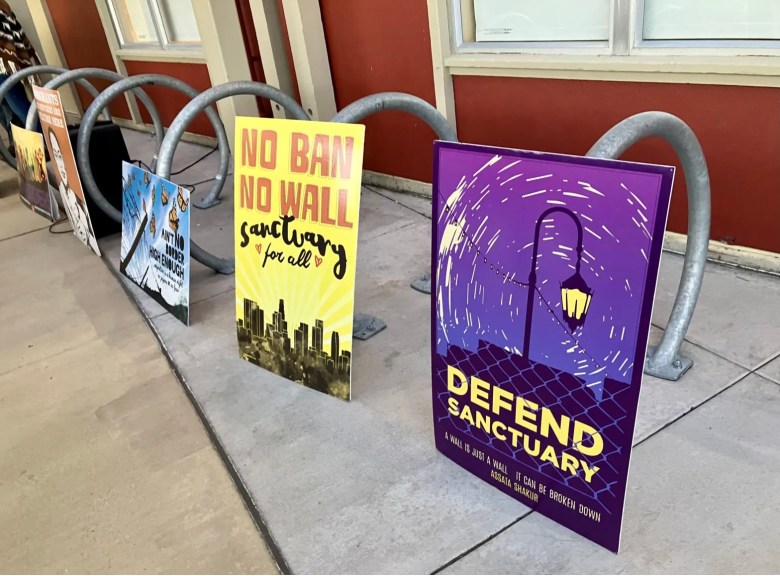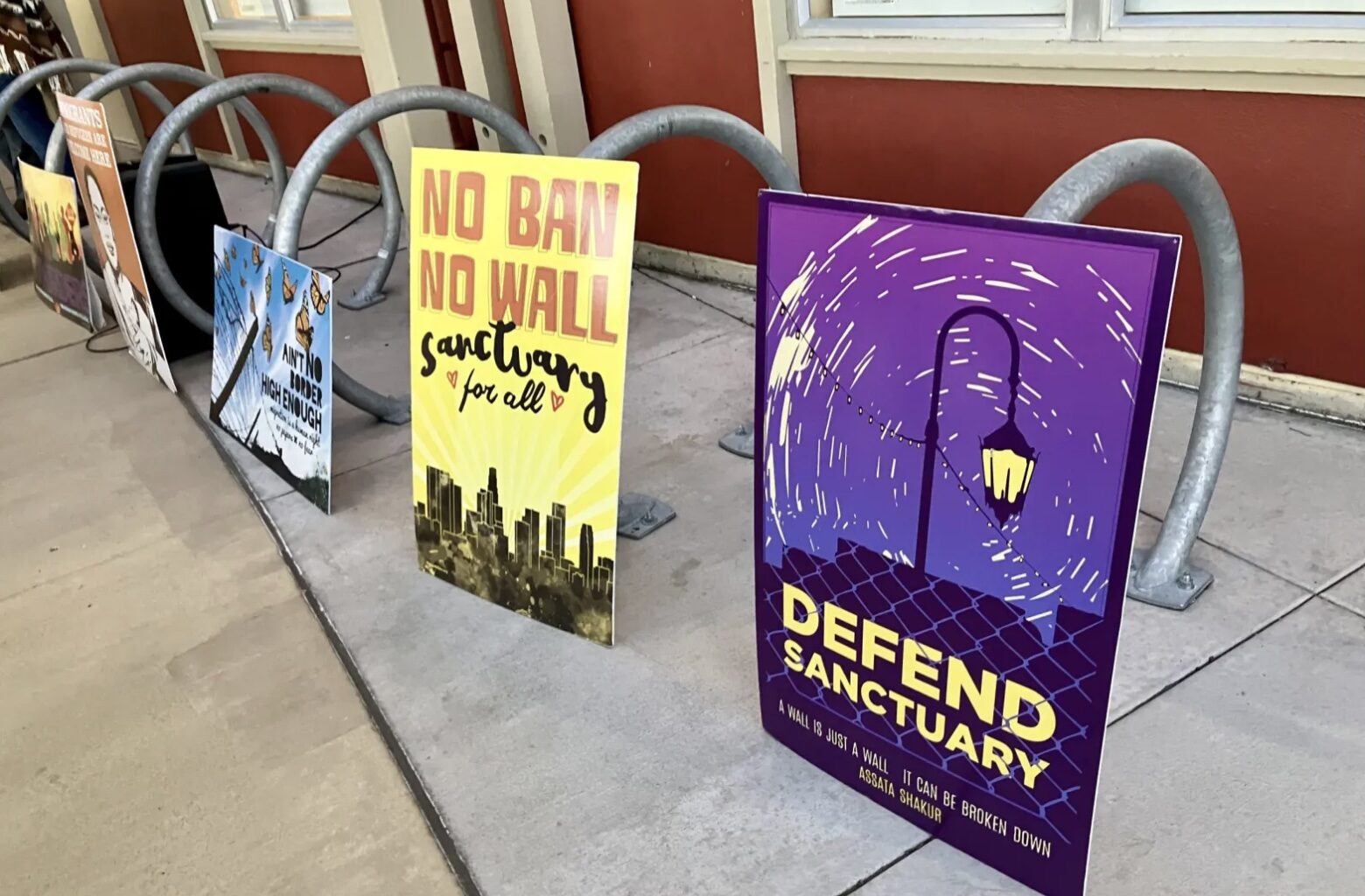 Signs made by migrant advocates and members of community organizations in the East Bay supportive of Berkeley’s sanctuary city status. File photo: Vanessa Arredondo
Signs made by migrant advocates and members of community organizations in the East Bay supportive of Berkeley’s sanctuary city status. File photo: Vanessa Arredondo
The Berkeley Unified school year began in August during a chaotic summer that saw federal immigration activities carried out across the state. In Los Angeles, immigration raids triggered intense street protests and, as of yesterday, an emergency declaration by the county. In the East Bay, six people including a minor were arrested at their home in East Oakland. Federal immigration agents have also visited Berkeley, and the city was among 18 “sanctuary jurisdictions” — a list that also includes Oakland, Richmond, El Cerrito and Albany — called out by the Trump administration for not complying with federal immigration laws.
In the weeks since, Berkeley Unified School District (BUSD) administrators have sought to assure community members of their commitment to serving all families, while busily preparing plans to minimize harm should federal agencies ramp up their activities in the city.
Mike Chang, BUSD’s acting school board president, said in an email that staff at the district’s Office of Family Engagement and Equity (OFEE) have been trained to help vulnerable families create plans that include things like alternative childcare options, emergency contact lists, and important documents that could be useful if a family member is detained.
Chang also said the district has provided families with guidance and resources in multiple languages and created protocols for school-site staff to follow, should ICE show up on campuses.
“BUSD’s mission and values are aligned with the principles and practices of inclusivity and fair access for all of our students, regardless of legal status, including those from immigrant families,” Chang said.
District spokesperson Trish McDermott told Berkeleyside in an email last Thursday that BUSD staff have attended meetings and held webinars with various city leaders, local community organizations, and attorneys “to inform the district’s immigration enforcement action response protocols and ensure we operate with the most current information.
“As we do this work, the district will continue to protect the right of every student to attend our public schools,” she said.
In late September, BUSD co-hosted a know-your-rights workshop with two community-based organizations, East Bay Sanctuary Covenant and the Multicultural Institute, which was attended by about two-dozen community members. During the meeting, BUSD Compliance Officer Jasmina Viteskic outlined steps the district is taking to protect families from federal immigration enforcement, including additional know-your-rights workshops, teacher and staff training, and informational signs posted at school sites. She said BUSD is reusing some of its know-your-rights and “everyone is welcome” posters that were used in 2017, during the first Trump administration.
How many immigrant students attend BUSD?
BUSD, like other public school districts in California, is forbidden from asking about a student or family’s immigration status for enrollment purposes. District officials have also said that social security numbers will not be requested on school forms, and staff will not keep records related to a student’s immigration status. As such, it’s hard to determine how many BUSD students are newcomers or members of mixed-status families.
State data on English language learner (ELL) students provides a rough snapshot (though not all ELL students are immigrants, and vice versa). Of the roughly 9,000 students attending BUSD, about 7%, or nearly 600, are English language learners, and more than 48% of those students speak Spanish. Arabic-speaking students are the second largest ELL group at nearly 12%.
“I know this is a difficult and uncertain time,” Berkeley Mayor Adena Ishii told BUSD families in a video message recorded for a community webinar last month. “For decades, Berkeley has stood by immigrants, and we will continue to protect all of our residents.”
Christopher Martínez, a representative from the Alameda County Immigration Legal and Education Partnership (ACILEP) rapid response team, urged community members attending the webinar to only share verified information about ICE sightings, to avoid contributing to rumours that can create more fear.
“We’re not faulting the community at all,” Martinez said, acknowledging the high anxiety that currently exists among immigrant families. If someone suspects they see ICE, they should record video or take photos if doing so feels safe, he added, and report the incident to the rapid response team.
Martinez said ACILEP is working to extend its response operations to cover weekends, when he said enforcement activity tends to spike. Advocates hope it will eventually become a 24/7 network. Martínez said the group is also working on establishing a mutual aid network to assist families in the Bay Area impacted by federal enforcement. ACILEP is currently looking for volunteers with legal expertise or other skills who can help.
“*” indicates required fields

